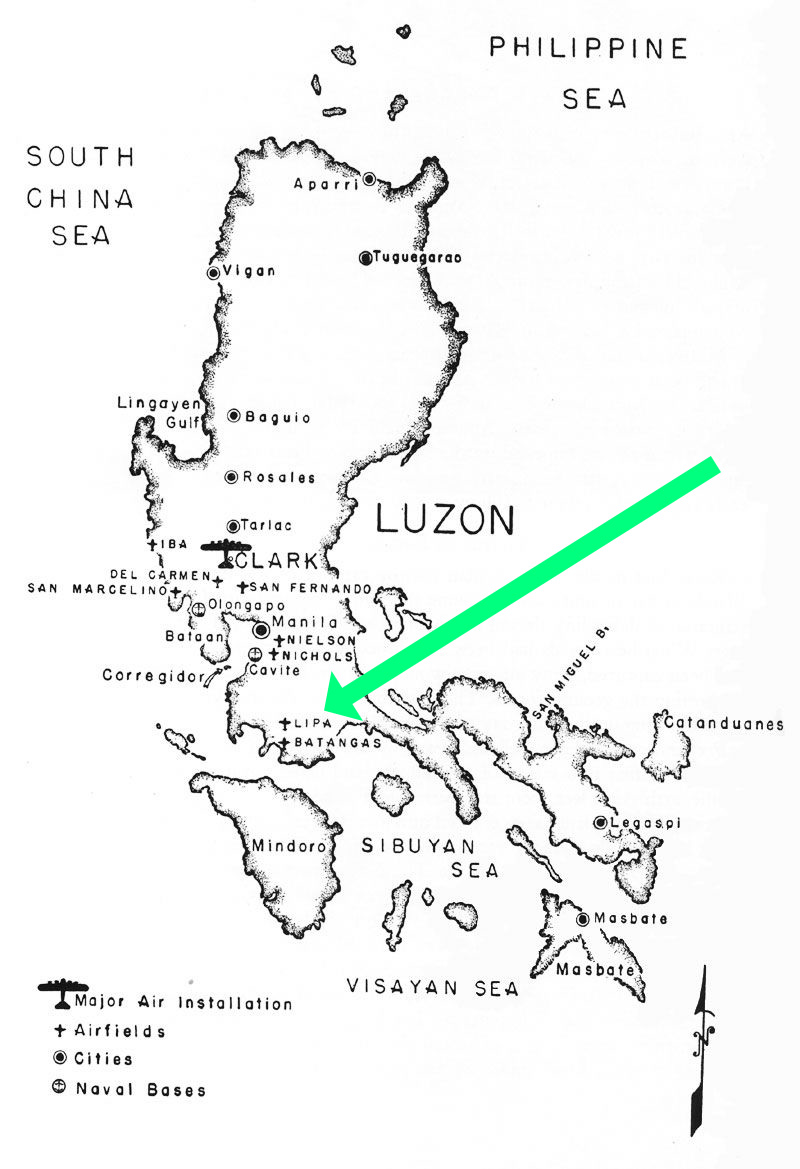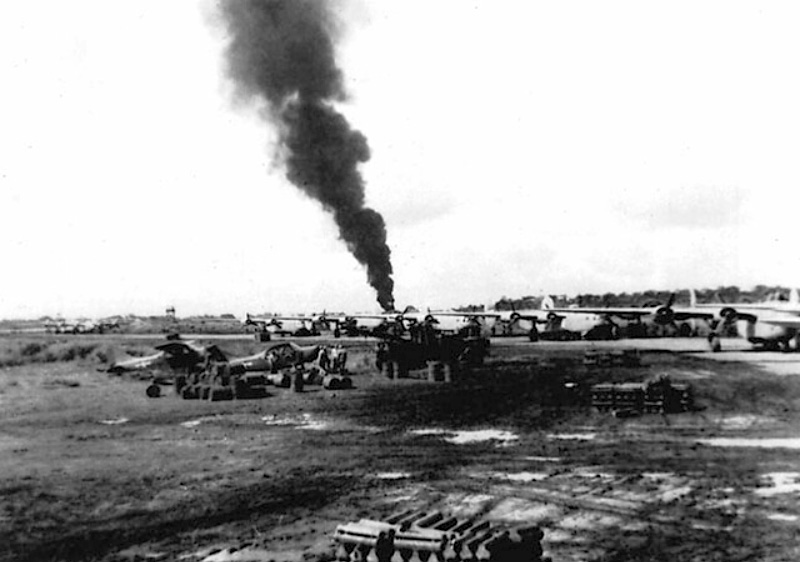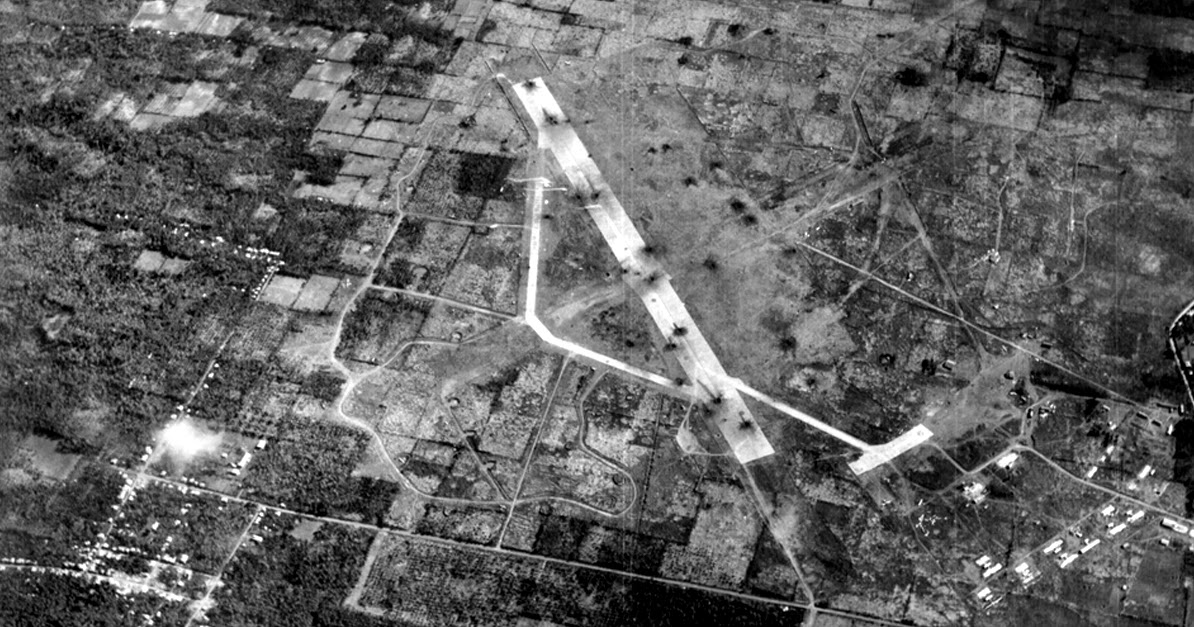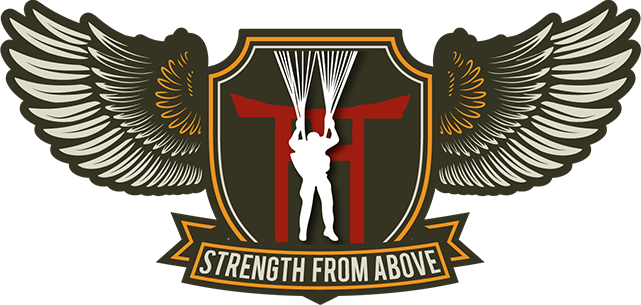Lady Luck and the Lipa Airstrip Crash
 On August 12, 1945, one of the most tragic events in the history of the 11th Airborne Division occurred on what some would consider "an insignificant airbase" at Lipa, Batangas on Luzon, Philippine Archipelago. Outside of native Filipinos, most people don't even know where Lipa is, but over 75 years ago (as of 2021) this event ripped at the heartstrings of an entire division of combat veterans who had already seen so much hell.
On August 12, 1945, one of the most tragic events in the history of the 11th Airborne Division occurred on what some would consider "an insignificant airbase" at Lipa, Batangas on Luzon, Philippine Archipelago. Outside of native Filipinos, most people don't even know where Lipa is, but over 75 years ago (as of 2021) this event ripped at the heartstrings of an entire division of combat veterans who had already seen so much hell.
The 11th Airborne Division, known as "The Angels", had been fighting on Luzon since February and were heavily involved in the retaking of Manila and then southern Luzon. After nearly six months of intense fighting, the Angels were anticipating final operations as the war drew closer and closer to Tokyo's doorstep. The battle-worn division set up at Lipa to integrate replacements and prepare for a jump on either China or Japan itself. Those anticipations changed after COL Paul Tibbets and his Enola Gay crew dropped the first atomic bomb over Hiroshima on August 6, 1945.
Then, at 1158 on August 9, bombardier CPT Kermit Beahan released the 10,800-pound payload nicknamed “Fat Man” over the Urakami Valley. Over 760 miles away in Tokyo the Imperial Supreme War Council was discussing conditional surrender terms and thirty minutes after the debate began, news arrived that a second super bomb had been dropped with another Japanese city utterly destroyed. The next day Japan’s leadership agreed to the Potsdam Ultimatum.
That same day, August 10, the Angels’ radios at Lipa received word that Japan had officially begun peace talks. T-5 L. E. Winenow, a photographer in Division HQ, characterized the Angels’ emotions when he wrote to his family, “To tell the truth, we didn’t do any of the wild celebrating like in the states. It was taken pretty calmly; perhaps because we know the Japs better than any of you folks, and we didn’t dare believe it could be true.”
Many of COL Edward Lahti’s HQ at 1500 to order the 511th PIR be at the airfield at 1700. When Lahti could not be found, LTC Hank Burgess had the bugler play “Call to Arms” which prompted “Big Ed’s” return. Surprised by the news (but not the honor of the assignment), COL Lahti set his staff to work. They had two hours to move an entire regiment during which time the paratroopers traded guarded looks as they rushed to pack. Was the invasion on? Were they the first sacrificial lambs to “storm the beaches” on Hirohito’s homeland? Were the Japanese luring the Angels in only to slaughter them on the ground?
Cooler heads prevailed and announced they would wait on Okinawa until peace terms had officially been agreed upon. The bigger news was that the Angels would land at Atsugi before heading to Tokyo to disarm the Imperial Palace’s royal guards, then GEN Swing’s "Thieves" would protect the Imperial family from fanatical Japanese. Smiles broke out amongst the Angels. The Screaming Eagles may have taken Hitler’s Kehlsteinhaus (Eagle’s Nest) in Berchetgarden, but COL Lahti’s boys agreed that only the 511th could handle being the first full foreign regiment to step foot on Japan’s mainland and defend the Emperor.
But first they had to get there.
By 1300 the entire regiment had been recalled from rest camps (those who didn’t make it would have to travel by boat) and the 511th PIR moved in borrowed trucks or by rail to the airfields just as 351 C-46s, 151 C-37s and 99 B-24s began flying in. Under control of the 54th Troop-Carrier Wing’s MG William Ord Ryan, the 11th Airborne's planes began loading at the Lipa, Nichols, Nielson and Clark Airfields then prepared to head for Okinawa as GEN MacArthur looked on.
The Lipa Airfield West had two strips, one of concrete and one that was hard-packed dirt. The concrete strip was 4,140 feet long and the dirt strip measured 4,593 feet in length. At 1700 D-511's 2nd Platoon began loading into B-24 Liberators of the 22nd Bomb Group, 33 Squadron, 5th Air Force (the 43rd Bomb Group also pitched in); the paratroopers were hesitant to stand on the long boards placed over the bomb bays, but they obediently shuffled into the fuselage in groups of 20. Although the rear of the bombers would have been more ideal for troop loading, that would have made the "Flying Boxcars" even more difficult to fly, so the dual bomb bays were selected (it looked good on paper, some said).
Those still waiting along the airstrip's edges watched several bombers take off, then were shocked when disaster struck. B-24M #44-50795, known as Lady Luck, bounced her right wheel off an embankment and "crashed in a rice paddy" (this was likely a sugar cane paddy since the area had been a sugar cane field a few years earlier). The landing gear was shoved up through the wing and the fuel lines which sparked a fire as she went down hard.
 As fire enveloped the wreckage (seen in photo to the right) the plane’s .50 caliber ammunition began to cook off, sending rounds in every direction (all craft were traveling combat loaded). Undeterred, crash survivor 1LT Hoadly Ryan, D Company's newly selected CO, carried a wounded comrade to safety then rushed back into the flames, twice, despite attempts by Lady Luck's twenty-year-old pilot LT Jack Lee Cook of Kansas City, Missouri, and his copilot to restrain him. Hoadly saved several fellow paratroopers and a handful of the aircrew before Lady Luck blew up, nearly in his face, as he ran back for another attempt.
As fire enveloped the wreckage (seen in photo to the right) the plane’s .50 caliber ammunition began to cook off, sending rounds in every direction (all craft were traveling combat loaded). Undeterred, crash survivor 1LT Hoadly Ryan, D Company's newly selected CO, carried a wounded comrade to safety then rushed back into the flames, twice, despite attempts by Lady Luck's twenty-year-old pilot LT Jack Lee Cook of Kansas City, Missouri, and his copilot to restrain him. Hoadly saved several fellow paratroopers and a handful of the aircrew before Lady Luck blew up, nearly in his face, as he ran back for another attempt.
The wounded angel was awarded the Soldier’s Medal, but D Company lost nine good men that day, plus one HQ3 man:
- 1LT Walter E. Kannely
- SGT Edward F. Caskin
- S/SGT Howard C. Moshier
- T-5 Joseph E. Signor
- PFC Leonard L. Tillmann
- PFC George Zarr
- PFC Delbert Hayes
- PVT William Woitas
- PVT Arthur Justin
- PVT Chandler J. Krause (died of wounds the next day)
- PVT Kenneth D. Wismer of HQ3 (died of wounds the next day)
With the war so close to ending, it was a tragic loss and 1st Battalion’s CPT Stephen Cavanaugh. D Company's former CO, noted, "What was especially difficult for me was that this was one of the planes carrying men I had led (on) Leyte and Luzon."
While he lay recovering back in the states, my grandfather 1LT Andrew Carrico learned that his friends LT Kannely, S/SGT Moshier and T-5 Signor had died in the crash, along with others he had fought with and endured such hardships alongside. Tragically LT Kannely had been sitting in the bomber’s nose and was trapped in the flames after the crash, and Grandpa often wondered if he would have been in the same plane had he not been wounded on Mt. Bijang back in March.
When GEN Swing arrived at the Lipa crash site, he asked what happened. Lady Luck's LT Jack Cook (he would be promoted to Captain just weeks later) simply responded, "I think the runway is too short." Trusting the pilot who had flown over 40 combat missions with over 400 flight hours, a somber Swing ordered the rest of the bombers unloaded and had the paratroopers trucked to Manila for flights on regular transports.
 On September 18, 1993, Jack Cook was invited to attend the 11th Airborne Association reunion in Portland, Oregon where the former pilot explained what had happened that fateful day nearly forty years before. Cook said that he had experienced no problems while he taxiing Lady Luck onto the airstrip and that the only thing he noticed was that the #1 engine took a little longer than usual to reach full speed. And yet, when he felt the bomber was moving fast enough and he tried to pull her into the air, Cook said he felt a tremendous drag, but Lady Luck slowly started to rise off the strip. She hit a small tree, but Cook hoped to keep climbing.
On September 18, 1993, Jack Cook was invited to attend the 11th Airborne Association reunion in Portland, Oregon where the former pilot explained what had happened that fateful day nearly forty years before. Cook said that he had experienced no problems while he taxiing Lady Luck onto the airstrip and that the only thing he noticed was that the #1 engine took a little longer than usual to reach full speed. And yet, when he felt the bomber was moving fast enough and he tried to pull her into the air, Cook said he felt a tremendous drag, but Lady Luck slowly started to rise off the strip. She hit a small tree, but Cook hoped to keep climbing.
A few seconds later, Lady Luck's right wheel hit the ramp just passed the edge of the strip and she went down.
The next day, Captain Cook and his copilot walked back out to the airstrip and noticed two long, black lines running down the length of the strip. In 1993 while at the 11th Airborne Division reunion, Jack Cook told the gathered Angels and their wives that his copilot had likely (and inexplicably) stood on the brakes during takeoff, tragically preventing the doomed craft from reaching speed.
The gathered troopers were grateful for Captain Cook's honesty and expressed that they had no ill-will towards the former pilot.
As to the ten young Angels whose lives were lost that day at Lipa, may we remember their names and honor the freedoms and privileges that they gave their last full measure for.
To learn more about the 11th Airborne Division in World War II, please consider purchasing a copy of our books on the Angels:

